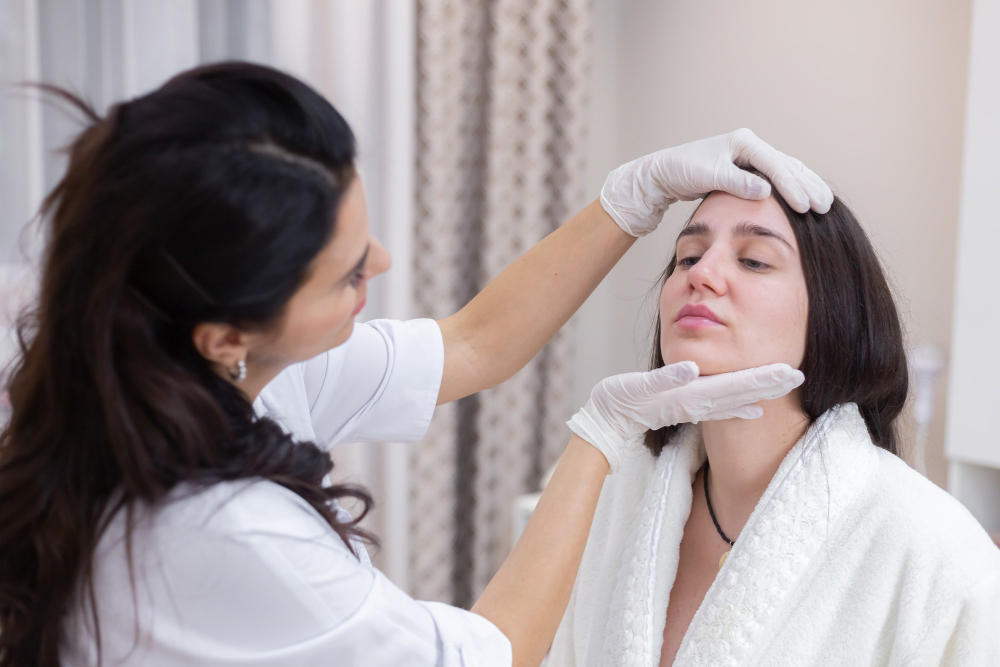
7 Best Skin Repair Treatments for Scars To Buy In 2023

Scars, a natural part of the body’s healing process, can be a source of discomfort for many. They vary in size, shape, and appearance, often depending on their cause and the body’s response to healing. Fortunately, advancements in skincare have led to a variety of effective treatments for scar repair.
In this article, we delve into the 7 best skin repair treatments for scars, helping you choose the right solution for your skin concerns.
Tips for Choosing Skin Repair for Scars
When it comes to choosing skin repair treatments for scars, it’s crucial to consider various factors to ensure you select the most effective and suitable option for your skin type and specific scar condition. Here are some key tips to guide you in making an informed decision:
Understand Your Scar Type
- Know Your Scar: Different scars (like keloids, hypertrophic, atrophic, or acne scars) respond differently to treatments. Identifying your scar type is the first step in choosing the right treatment.
- Severity Matters: The severity of the scar can determine the type of treatment needed. More pronounced scars might require professional procedures.
Consider Your Skin Type
- Sensitive Skin: If you have sensitive skin, opt for gentler treatments to avoid irritation.
- Skin Tone: Some treatments, like certain laser therapies, may not be suitable for all skin tones. Consult with a dermatologist to find the best fit.
Evaluate Treatment Options
- Non-Invasive vs. Invasive: Decide whether you prefer non-invasive treatments like gels and creams or are open to more invasive procedures like laser therapy or surgery.
- Long-Term vs. Short-Term Results: Some treatments offer quick results but may not last long, whereas others take time but offer more enduring results.
Research Ingredients and Technology
- Active Ingredients: Look for products with proven ingredients for scar treatment, such as silicone, hyaluronic acid, or vitamin E.
- Latest Technology: Stay informed about the latest advancements in scar treatment, like new laser technologies or microneedling techniques.
Read Reviews and Testimonials
- Real Experiences: Check reviews and testimonials to gauge the effectiveness of the treatments from actual users.
- Before and After Pictures: Visual evidence can be helpful in assessing the potential results of a treatment.
Consider Your Budget
- Cost-Effective Solutions: While some treatments can be costly, there are effective options available for various budgets.
- Insurance and Coverage: Check if your insurance covers any of the procedures, as some treatments can be recognized as medical necessities.
Consult a Professional
- Dermatologist Consultation: A dermatologist can provide personalized advice based on your skin type, scar condition, and health history.
- Multiple Opinions: It’s often beneficial to get a second opinion before proceeding with any treatment.
Be Realistic About Results
- Patience is Key: Scar treatments often take time to show results, and patience is important.
- Manage Expectations: Understand that while many treatments can significantly reduce the appearance of scars, completely erasing them is often not possible.
Prioritize Safety
- FDA Approval: Opt for treatments that are FDA-approved or recommended by health authorities.
- Side Effects: Be aware of potential side effects and discuss them with your healthcare provider.
Monitor and Adapt
- Track Progress: Keep track of your treatment progress to assess its effectiveness.
- Be Flexible: Be prepared to adapt your treatment plan based on the results and professional advice.
By following these tips, you can make a more informed decision about choosing the right skin repair treatment for your scars. Remember, every skin is unique, and what works for one person may not work for another. Always prioritize your skin’s health and consult with a dermatologist for personalized advice.
7 Best Skin Repair Treatments for Scars
1. Silicone Gel Sheets

Silicone gel sheets are a popular non-invasive treatment for scar reduction. They work by hydrating the scar tissue, which helps to reduce its size and improve its texture.
Pros:
- Easy to use and apply
- Non-invasive and painless
- Suitable for various types of scars
Cons:
- May require consistent, long-term use for best results
- Can be visible when worn
2. Topical Creams and Gels

A variety of over-the-counter and prescription creams and gels are available for scar treatment. Ingredients like onion extract, vitamin E, and hydroquinone are often used to improve scar appearance.
Pros:
- Convenient and easy to apply
- Variety of options to suit different scar types
Cons:
- Results can vary
- Some ingredients may cause skin irritation
3. Laser Therapy

Laser therapy uses focused light therapy to reduce scar tissue and can improve the skin’s appearance. Different types of lasers are used, depending on the scar type.
Pros:
- Effective for various scar types, including acne scars
- Quick results in some cases
Cons:
- Can be expensive
- May require multiple sessions
4. Microneedling

Microneedling involves using a device with fine needles to create tiny punctures in the top layer of skin, which can help in reducing the appearance of scars by stimulating collagen production.
Pros:
- Stimulates natural skin regeneration
- Effective for acne scars and stretch marks
Cons:
- Can be painful
- Risk of skin irritation
5. Chemical Peels

Chemical peels involve applying a chemical solution to the skin, which helps to remove the top layers, reducing the appearance of scars.
Pros:
- Can provide quick results
- Helps in overall skin rejuvenation
Cons:
- Risk of skin irritation and peeling
- Not suitable for all skin types
6. Dermabrasion

Dermabrasion is a surgical procedure that involves the removal of the top layers of skin using a rapidly rotating device, which can smooth out scars.
Pros:
- Effective for deeper scars
- Long-lasting results
Cons:
- Invasive and requires recovery time
- Risk of skin color changes and scarring
7. Steroid Injections

Steroid injections are often used for hypertrophic scars and keloids, reducing their size and relieving symptoms like itchiness and discomfort.
Pros:
- Quick relief from symptoms
- Effective for certain types of scars
Cons:
- May require multiple treatments
- Potential side effects like skin thinning
Important Note:
“Before opting for any scar treatment, it’s crucial to consult with a dermatologist or skincare professional to determine the best course of action based on your specific skin type and scar condition.”
Conclusion
Scars, while a natural part of healing, don’t have to be a permanent reminder of past wounds. With the array of treatments available, ranging from topical solutions to more advanced procedures, there’s a suitable option for every type of scar and skin type. Remember, the effectiveness of each treatment can vary based on individual factors, so professional consultation is key.
| Treatment Method | Ideal For | Pros | Cons |
|---|---|---|---|
| Silicone Gel Sheets | Various Scars | Non-invasive, Easy to Use | Long-term Use, Visibility |
| Topical Creams/Gels | Mild to Moderate Scars | Convenient, Variety | Varying Results, Possible Irritation |
| Laser Therapy | Acne Scars, Deep Scars | Quick Results, Effective | Expensive, Multiple Sessions |
| Microneedling | Acne Scars, Stretch Marks | Natural Regeneration, Effective | Painful, Irritation Risk |
| Chemical Peels | Superficial Scars | Quick Results, Skin Rejuvenation | Irritation Risk, Not for All Skin Types |
| Dermabrasion | Deeper Scars | Long-lasting, Effective | Invasive, Recovery Time |
| Steroid Injections | Hypertrophic Scars, Keloids | Quick Symptom Relief, Effective | Multiple Treatments, Side Effects |
Remember, each skin is unique, and what works for one might not work for another. Always prioritize your skin’s health and seek professional advice when considering scar treatments.
Frequently Asked Questions About Skin Repair for Scars
When it comes to skin repair for scars, there are numerous questions that individuals commonly have. Here are some of the most frequently asked questions to help provide clarity and guidance in this area:
What are the most effective treatments for scar repair?
- Answer: The effectiveness of scar treatments varies depending on the type and severity of the scar. Common effective treatments include silicone gel sheets, laser therapy, microneedling, and topical creams containing ingredients like onion extract or vitamin E.
Can natural remedies be effective for scar repair?
- Answer: Natural remedies like aloe vera, honey, and essential oils may help in mild scar healing and skin conditioning. However, their effectiveness is generally less compared to medical treatments and varies from person to person.
How long does it take to see results from scar treatment?
- Answer: The time to see results can vary widely depending on the treatment type. Some treatments like laser therapy can show improvements in a few sessions, while others like topical creams may require consistent use for several months.
Are scar repair treatments safe for all skin types?
- Answer: Most scar treatments are safe for various skin types, but individual reactions can vary. Some treatments, like certain laser therapies, may not be suitable for darker skin tones. It’s essential to consult with a dermatologist to determine the best treatment for your skin type.
Can scars be completely removed?
- Answer: While many treatments can significantly reduce the appearance of scars, completely erasing them is often not possible. The goal of scar treatment is usually to make the scar less noticeable and more consistent with the surrounding skin.
Do over-the-counter scar treatments work?
- Answer: Over-the-counter treatments can be effective, especially for minor scars. Products containing silicone, hyaluronic acid, or certain herbal extracts are known to help in scar healing. However, for more severe scars, professional treatments might be more effective.
Is surgery an option for scar repair?
- Answer: Yes, surgical options such as scar revision surgery are available for certain types of scars, especially where non-invasive methods are not effective. Surgery is typically considered for large or very deep scars.
Can diet and lifestyle affect scar healing?
- Answer: A healthy diet rich in vitamins and minerals can support overall skin health and aid in healing. Avoiding smoking and excessive sun exposure can also positively impact scar healing.
Are there any risks associated with scar repair treatments?
- Answer: Each treatment has its own set of potential risks and side effects. For instance, laser therapy might cause temporary redness and swelling, while surgical methods have risks like infection. Discussing these with a healthcare provider is crucial.
How can I prevent scarring after an injury?
- Answer: Prompt and proper wound care is essential to prevent or minimize scarring. Keeping the wound clean, avoiding picking at scabs, and protecting it from excessive sun exposure can help. Once the wound has healed, treatments like silicone gel sheets can be used to minimize scarring.






